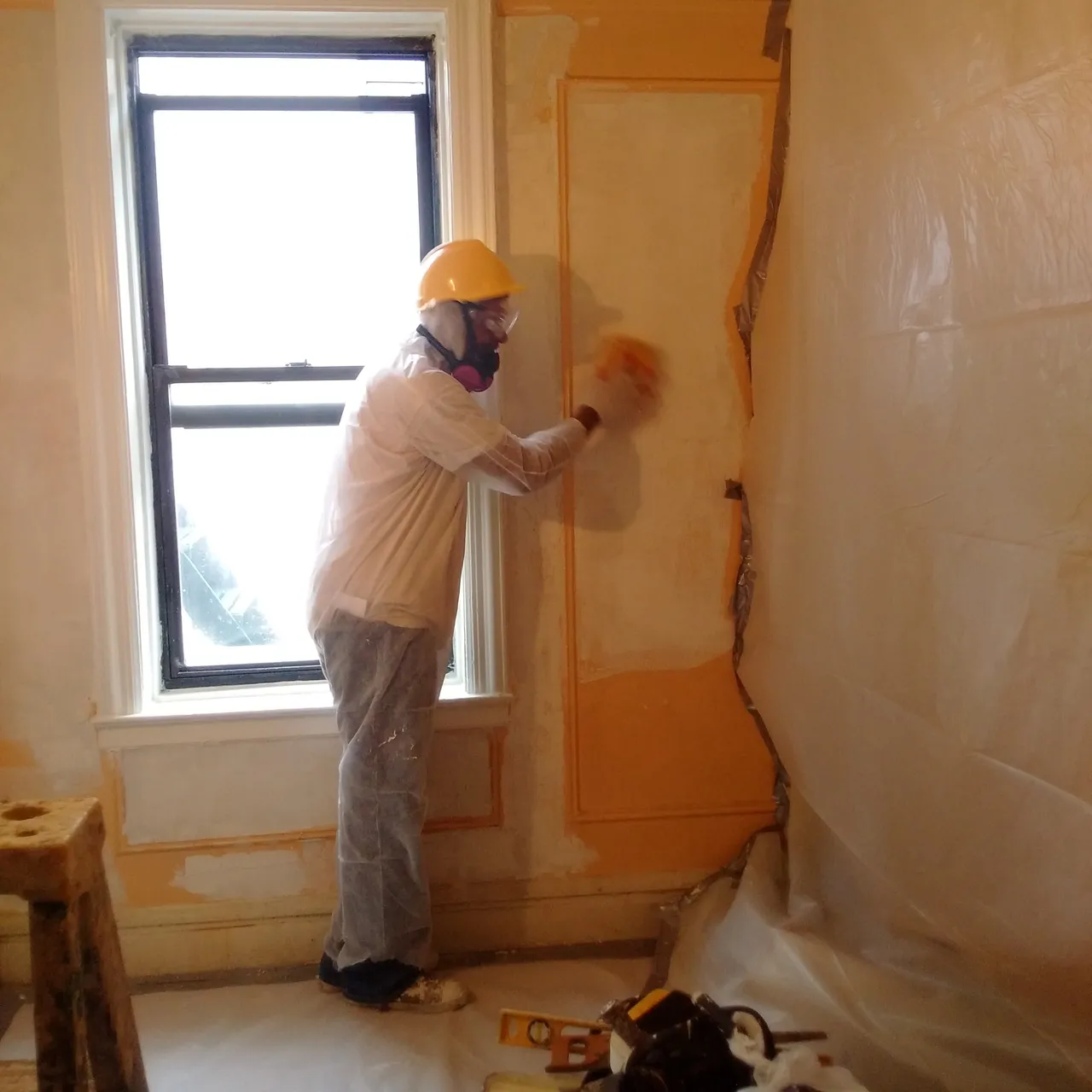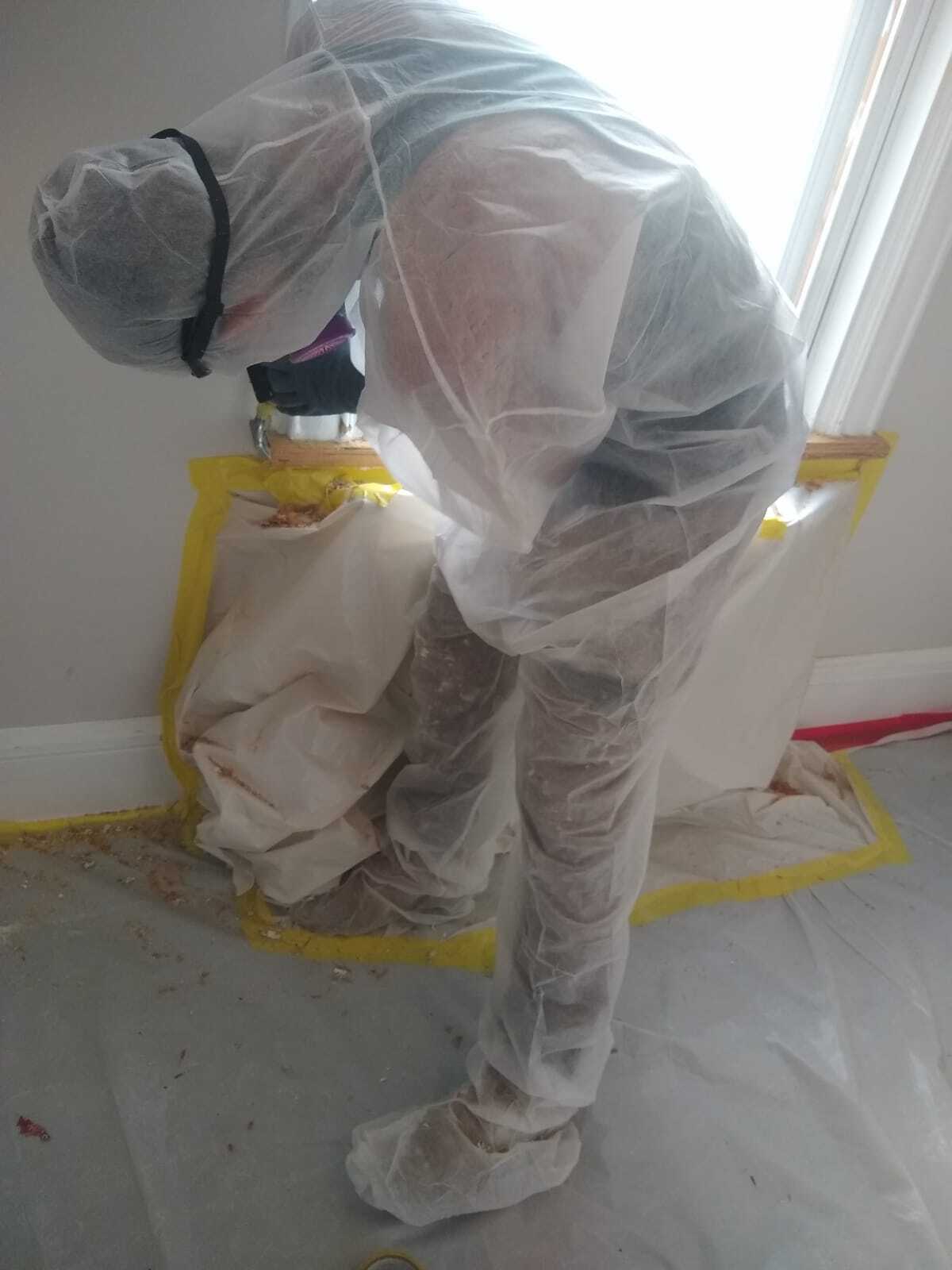Comprehensive Lead Paint Removal Service in NYC-- Accredited and Qualified
Comprehensive Lead Paint Removal Service in NYC-- Accredited and Qualified
Blog Article
Finest Practices for Making Sure Safe and Comprehensive Lead Infraction Reduction
Dealing with lead infraction abatement calls for a multi-faceted approach to make sure both safety and security and compliance. Initial analyses making use of advanced discovery approaches such as XRF analyzers established the phase for a specific understanding of contamination levels. Including proper containment strategies, consisting of airtight barriers and HEPA purification, paired with the use of individual safety equipment (PPE) for workers, develops the foundation of a secure operation. Careful cleaning protocols, featuring HEPA vacuuming and wet-wiping, are vital. It's the last clearance procedure, entailing thorough evaluations and laboratory testing, that genuinely validates a lead-free environment, ensuring long-term safety and security. How do these practices adjoin to assure thorough lead reduction?

Initial Analysis
Performing an initial analysis is a critical very first step in lead offense abatement. This phase encompasses a detailed assessment of the home to identify the existence, extent, and details places of lead-based hazards. Certified professionals, such as qualified lead inspectors or take the chance of assessors, ought to execute an extensive website assessment, utilizing tools like X-ray fluorescence (XRF) analyzers to accurately identify and determine lead focus in paint, dust, dirt, and water.
The analysis should additionally include an evaluation of the structure's history, previous reports, and any kind of problems or wellness problems reported by passengers - Lead Removal Contractors. Documenting the findings diligently is vital, as these documents form the basis for establishing a reliable reduction technique. A thorough assessment likewise includes tasting and laboratory analysis, which are important to validate the presence of lead and overview succeeding activities
In addition, it is necessary to connect the results transparently to all stakeholders, including homeowner, renters, and regulative authorities. By making sure that the first assessment is conducted with precision and rigor, professionals can lay a solid foundation for a targeted and efficient lead abatement process, ultimately protecting public health and wellness and making sure conformity with regulative requirements.
Appropriate Containment
Appropriate containment is important to stop the spread of lead pollutants during abatement tasks. Properly taking care of control decreases the danger of lead dust and debris migrating to non-work locations, therefore safeguarding both the atmosphere and individuals outside the immediate work area. To attain appropriate containment, a closed barrier of plastic bed linen need to be developed around the workspace, guaranteeing all seams and edges are safely secured. Lead Removal Contractors. This barrier must prolong from flooring to ceiling and be taped down to prevent any leakages.

Normal evaluations of the control area are essential to inspect for violations or weak points in the barrier. Any type of identified concerns should be without delay addressed to keep the integrity of the control. By sticking to these methods, reduction projects can successfully control lead contamination and alleviate involved wellness risks.
Employee Defense
Guaranteeing employee protection is vital during lead abatement tasks to stop occupational exposure to unsafe lead particles. Essential measures you could look here consist of using personal safety devices (PPE) such as respirators, handwear covers, and full-body suits specifically created to obstruct lead dirt and fumes. Employees ought to go through thorough training on the correct usage and maintenance of PPE, consisting of healthy screening for respirators to ensure maximum efficiency.
Design controls, such as neighborhood exhaust air flow systems, are important in lessening air-borne lead focus in the work environment. Administrative controls must additionally be implemented, including restricting the duration of direct exposure and revolving workers to reduce individual exposure times. Regular medical surveillance and biological monitoring are important for early detection of lead absorption, allowing timely intervention and treatment.
Furthermore, developing a purification protocol is vital. Workers have to adhere to rigorous purification treatments prior to breaks and at the end of their change to stop lead dust from being carried outside the workplace. This consists of complete hand and face cleaning with lead-specific cleaning agents and changing out of contaminated clothing.
Precise Cleaning
Preserving a safe workplace expands beyond employee security and encompasses careful clean-up to guarantee lead particles are extensively eliminated from the site. The procedure of precise cleanup is essential in protecting against the recontamination of the eased off area and guarding both present and future residents.
To achieve a thorough clean-up, all job areas must be methodically sanitized. This includes using specialized HEPA (High-Efficiency Particulate Air) vacuum cleaner cleaners article source and wet-wiping methods to capture and eliminate fine lead dirt that might have picked surface areas. It is critical to clean up all straight surfaces, including floorings, window sills, and kitchen counters, as well as upright surface areas that might have trapped lead bits.
Employees must use appropriate personal safety equipment (PPE) during clean-up to avoid exposure to recurring lead dirt. Used cleansing products such as wipes, sponges, and mop heads must be dealt with in conformity with hazardous waste disposal guidelines.

Last Clearance
Last clearance is the essential concluding phase of lead abatement that determines whether the website is secure for reoccupation. This crucial action includes thorough examination and screening to confirm that all lead dangers have actually been successfully gotten rid of.

Final clearance screening not only shields future passengers however also ensures conformity with regional, state, and government laws. Furthermore, it serves as a recorded validation of the abatement service provider's adherence to market best techniques. Making sure an extensive and successful last clearance is important in guarding public health and wellness and fostering depend on in the abatement procedure.
Conclusion
Making sure safe and detailed lead infraction reduction necessitates a complex approach including initial evaluations with innovative detection approaches, effective containment techniques, rigorous worker security methods, and precise clean-up treatments. The final clearance phase, including detailed evaluations and research laboratory testing, is important to validate compliance with EPA requirements. Adherence to these best techniques assures a safe atmosphere for passengers, mitigates health dangers, and maintains governing requirements, thus promoting public health and wellness and safety and security in lead-affected locations.
Report this page